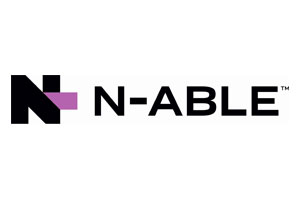How SaaS Application Security Risk Assessments Help MSPs
Why MSPs Should Conduct a SaaS Risk Assessment
More than 80% of 2023 data breaches involved data stored in the cloud, per IBM’s 2023 Cost of a Data Breach Report. To deal with the evolving SaaS risks, MSPs need a proactive and comprehensive approach to security and compliance. This is where a SaaS risk assessment comes into play.
A SaaS cyber assessment involves a meticulous examination of potential threats, vulnerabilities and compliance issues within the SaaS applications of MSPs and their clients. It serves as a strategic initiative to identify, evaluate and mitigate risks associated with the adoption and utilization of SaaS solutions.
Common SaaS Application Security Risks
According to Cloud Security Alliance, 43% of organizations have dealt with security concerns related to SaaS misconfigurations. Common SaaS risks vary based on factors such as the nature of the application and the sensitivity of the data being handled.
The typical SaaS security risks include:
| SaaS Risk | Description |
| Data breaches | Unauthorized access to sensitive data due to weak authentication, compromised credentials or vulnerabilities |
| Insecure APIs | Vulnerabilities in application programming interfaces (APIs) leading to unauthorized access or data exposure |
| Insufficient access controls | Poorly configured access controls resulting in users having excessive privileges or unauthorized access to critical data |
| Data loss | Accidental or intentional deletion of data, lack of proper backup mechanisms or inadequate recovery processes |
| Lack of encryption | Failure to encrypt data during transmission and storage, exposing sensitive information to interception or unauthorized access |
| Inadequate security patching | Delayed or insufficient application of security patches, leaving SaaS applications vulnerable to known exploits and cyberattacks |
| Insecure configurations | Misconfigurations in SaaS applications, cloud settings or user permissions introducing security vulnerabilities |
| Phishing and social engineering | Users falling victim to phishing or social engineering attacks, compromising credentials and leading to unauthorized access |
| Inadequate user training | Lack of proper training and awareness programs for users, leading to data security lapses such as sharing credentials or falling for social engineering attacks |
Benefits of SaaS Application Risk Assessment
Assessing risks in client SaaS environments underpins the foundation of a resilient and secure service delivery model for MSPs.
Let’s look at the key benefits of SaaS security risk assessments.
Competitive Advantage
In a saturated MSP market, standing out among competitors is crucial. When participating in competitive bidding processes, a cloud-based SaaS risk assessment helps MSPs win new deals as they can show the existing and potential risks to clients and how the MSP’s team will address them.
The security recommendations from a SaaS risk assessment report contribute to client retention by ensuring ongoing satisfaction with the quality and security of services.
Hear from our client WOM Technology Management Group:
“Those assessments are really where you show clients the gap between the security they need and the security they have. This helps show how dangerous their environment really is. SaaS Alerts plays a big, big role there.”
Kirolos Abdalla, WOM Technology Management Group
Enhanced Data Security
An effective SaaS risk management approach involves thoroughly examining the SaaS environment, including the application’s architecture, data handling processes and access controls. By identifying and addressing vulnerabilities in the infrastructure, security teams prevent unauthorized access, such as business email compromises.
Business Continuity
Conducting a SaaS risk assessment minimizes disruptions and downtime. By understanding potential risks, MSPs develop mitigation and recovery plans to address vulnerabilities. These strategies include implementing redundant systems, failover mechanisms and backup solutions to ensure continued operations.
Effective disaster recovery plans also reduce recovery time objectives (RTO) – the time to restore services and operations – ensuring a swift recovery from disruptive events.
Cost Savings
Unplanned downtime leads to financial losses – an estimated $301,000 to $400,000 revenue loss from one hour of downtime. Taking a proactive approach helps mitigate this risk, saving both time and money. A risk assessment also guides MSPs in making informed decisions about security investments such as cyber insurance, ensuring resources are allocated where they are most needed.
Stages of SaaS Security Risk Assessment
The risk assessments conducted by a SaaS security software platform involve multiple steps to identify, analyze and mitigate SaaS risks.
Here’s an overview of the key stages:
1. Preparation
- Objective definition: The process typically includes understanding the desired outcomes of the SaaS application risk assessment.
- Scope determination: The assessment team identifies the SaaS applications, systems and data to be assessed.
- Resource allocation: MSPs identify the team responsible for assessing and ensuring access to necessary tools and technologies.
2. Risk Identification
- Asset inventory: For a comprehensive understanding of the client’s SaaS environment, you need an inventory of SaaS assets, listing all applications, data repositories and systems in use.
- Threat enumeration: This step involves analyzing the SaaS landscape to pinpoint potential risks such as unauthorized access, data breaches or system vulnerabilities.
- User access review: Security platforms like SaaS Alerts review access privileges to ensure that only authorized individuals have the necessary permissions. This step helps identify and address potential data security gaps related to user access.
3. Risk Analysis and Assessment
- Impact analysis: By understanding the likelihood and potential impact of identified risks on the client’s business operations, you can prioritize mitigation efforts.
- Risk scoring: Risks are assigned scores based on their impact and likelihood, creating a risk matrix. This matrix aids in categorizing risks into high, medium or low priority, facilitating a targeted and efficient mitigation strategy.
4. Mitigation and Monitoring
- Mitigation strategies: This step involves developing mitigation strategies for each identified risk, implementing customizable security alerts and enhancing access management.
- Continuous monitoring: Constant visibility into the SaaS environment enables the detection of new risks and the timely adjustment of security measures such as stale account cleanups.
5. Automated Remediation
- Security recommendations: MSPs receive guidance on security best practices tailored to their clients’ SaaS environment. These recommendations often cover data encryption, multi-factor authentication (MFA) and other security measures aligned with industry standards.
- Rule-based systems: This step defines specific conditions or thresholds that, when triggered, automatically initiate remediation actions such as isolating affected systems or revoking access.
- Integration with professional services automation (PSA) systems: Automated remediation processes integrate with PSA systems to ensure that remediation actions are tracked and documented. This integration maintains a comprehensive record of security incidents and responses.
Conduct Risk Assessments with SaaS Alerts
While many MSPs get SaaS risk assessments only while onboarding a client, it is not sufficient to address the rapidly changing cyber risks. You need a more continuous approach – preferably on a quarterly basis – to proactively approach changes in the client’s IT infrastructure, such as new SaaS applications, migration to the cloud or system upgrades.
SaaS Alerts helps conduct comprehensive risk assessments for SaaS applications by providing powerful tools and insights to fortify your clients’ SaaS environments.
Here’s how our cyber assessment strategy helps MSPs:
- Threat detection: SaaS Alerts ensures that potential risks are identified promptly, allowing you to stay ahead of emerging threats and implement timely remediation measures.
- Actionable insights and recommendations: Our platform offers more than just alerts, delivering actionable insights and detailed Microsoft security recommendations for risk remediation.
- Automated remediation workflows: SaaS Alerts automates the implementation of recommended changes, reducing manual intervention and ensuring a consistent and efficient approach to risk resolution.
- Detailed reporting: SaaS Alerts logs every change made during the remediation process. Our comprehensive reporting gives you a clear overview of implemented changes and improvements.
Start your free trial to conduct a comprehensive SaaS risk assessment.






